On View
After Languishing in Obscurity, Cubist Maria Blanchard Finally Gets Her Due
Acclaimed Cubist painter Maria Blanchard is the subject of a major new retrospective at the Picasso Museum in Málaga.
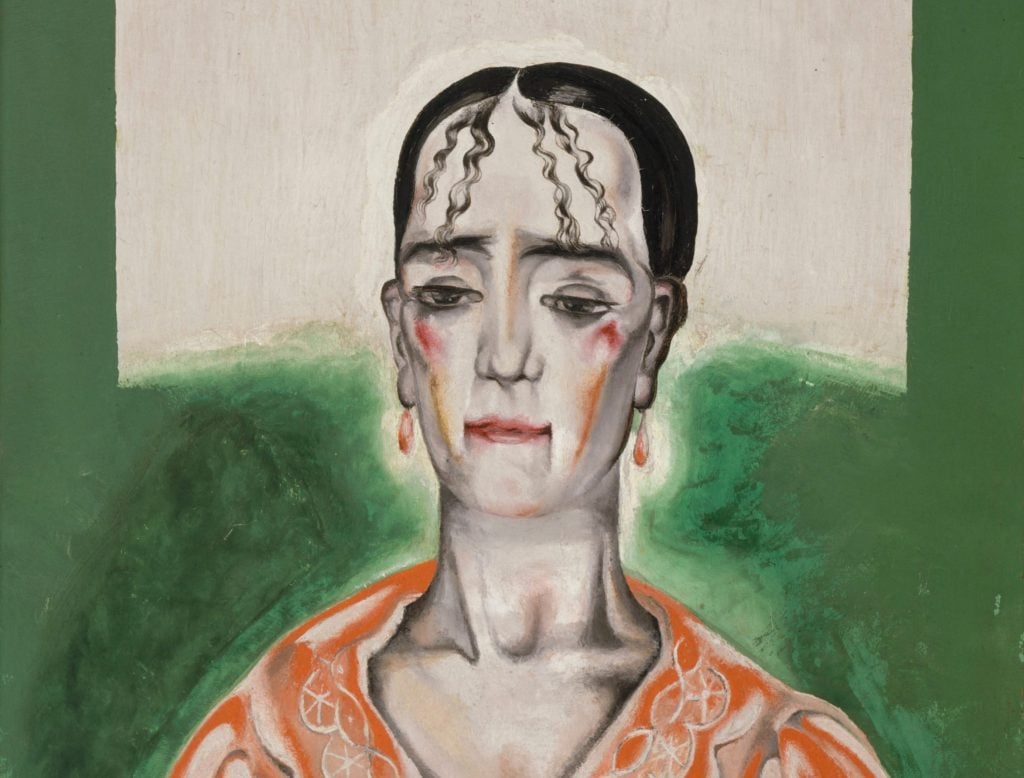
Acclaimed Cubist painter Maria Blanchard is the subject of a major new retrospective at the Picasso Museum in Málaga.

Jo Lawson-Tancred

When we think of Cubism, a pivotal moment in the birth of modernism when artists began to deconstruct their pictorial compositions, we immediately think of Picasso and his collaborator Georges Braque. The names of renowned Salon Cubists like Juan Gris, Fernand Léger, and Jean Metzinger may also come to mind. You’d be forgiven for assuming that no woman made a meaningful impact on the movement, since this has long been the dominant art historical narrative.
Enter Maria Blanchard. Though she was critically acclaimed in her day, the Spanish artist’s reputation fell into obscurity in the decades after her death in 1932. She is now the subject of an expansive retrospective at the Picasso Museum in his birthplace of Màlaga in southern Spain.
Though Blanchard was born in another Spanish city, Santander, in the same year as Picasso, 1881, rigid gender norms pushed both talented painters down different paths. Yet, against the odds, Blanchard would consistently defy societal expectations.
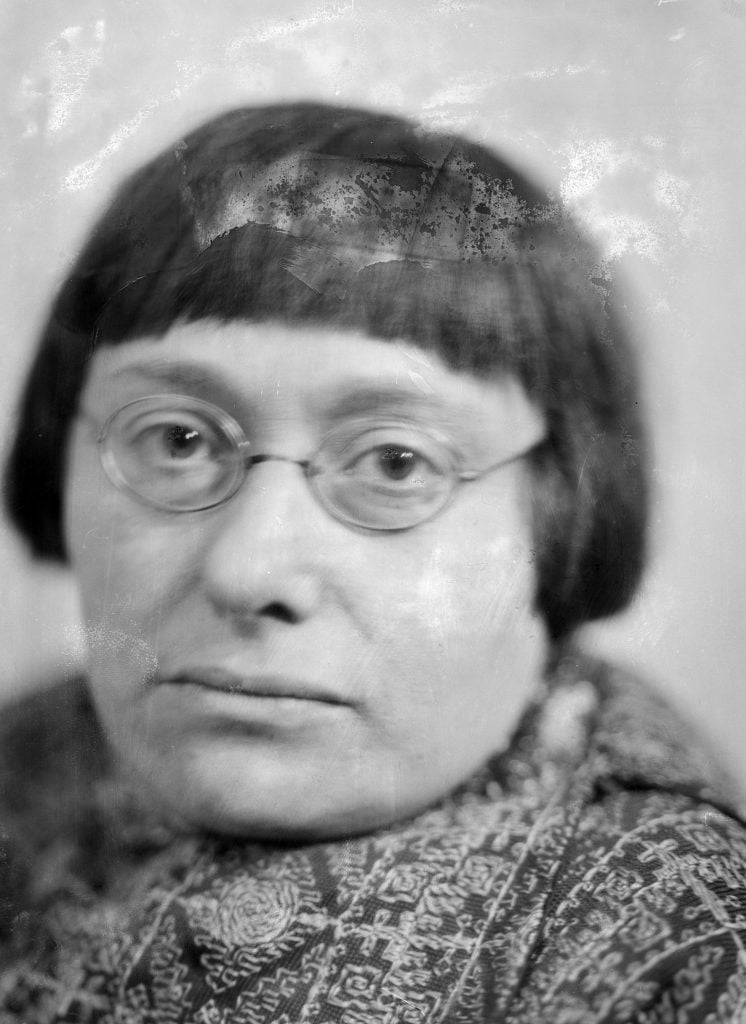
Maria Blanchard. Photo: © Henri Martinie/Roger-Viollet.
The artist was born with several physical disabilities, including kyphoscoliosis, an abnormal curvature of the spine that caused chronic pain, affected her growth and caused her to limp. As a result, Blanchard was badly bullied at school and her parents encouraged her to pursue a burgeoning interest in art.
By her early twenties, she moved to Madrid to continue her studies at the Real Academia de Bellas Artes de San Fernando. In 1908, the government of Santander gave Blanchard a grant to continue her education after she won third prize at the National Exhibition of Fine Arts. This backing helped her move to Paris the next year to enroll at the Academie Vitti.
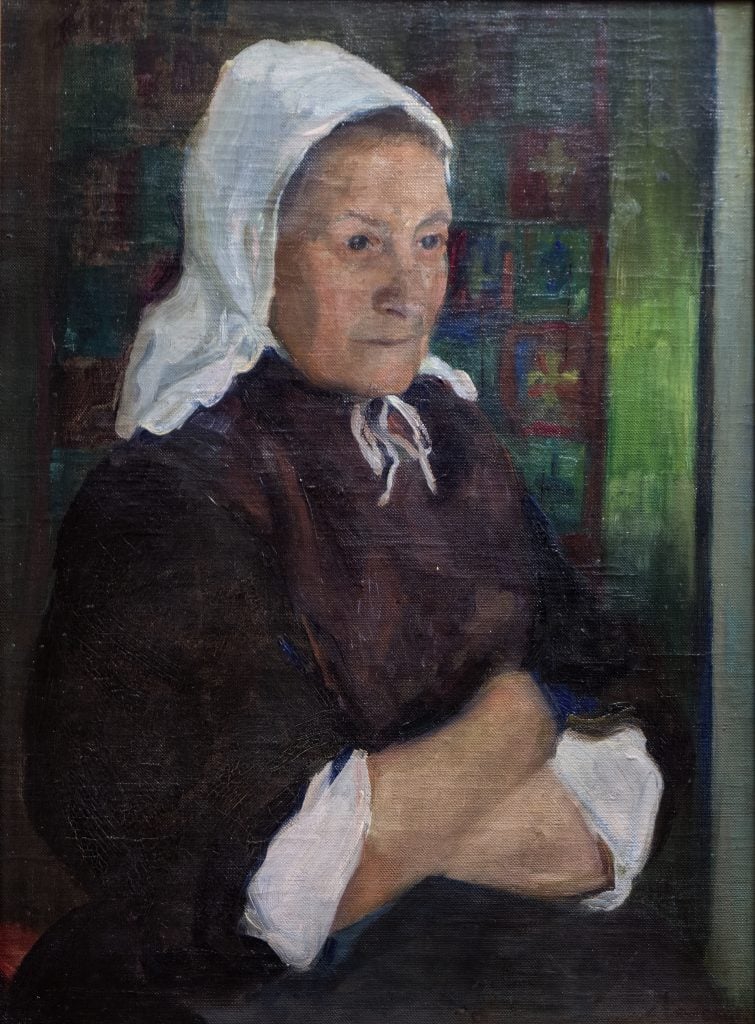
Maria Blanchard, Woman from Brittany (1910). Photo: José A. Gallego Poveda, courtesy of Colección Gobierno de Cantabria.
In her early works, it is easy to see Blanchard’s talents as a painter in the more traditional style and spot the emergence of some early experimentation. Some works seem to suggest she may have been looking at Munch, for example, while others are heavily stylized, a tactic she would deploy throughout her career.
Many of the works in the exhibition are sensitive portrayals of humble figures who look particularly pensive or melancholic. We can only guess at the reason that, shortly after moving to Paris, Blanchard painted The Spanish Woman (1910-13), in which a beautiful woman with classically Spanish features appears emotionally devastated. In 1914, the war meant Blanchard returned to Spain for two years before moving back to Paris in 1916.
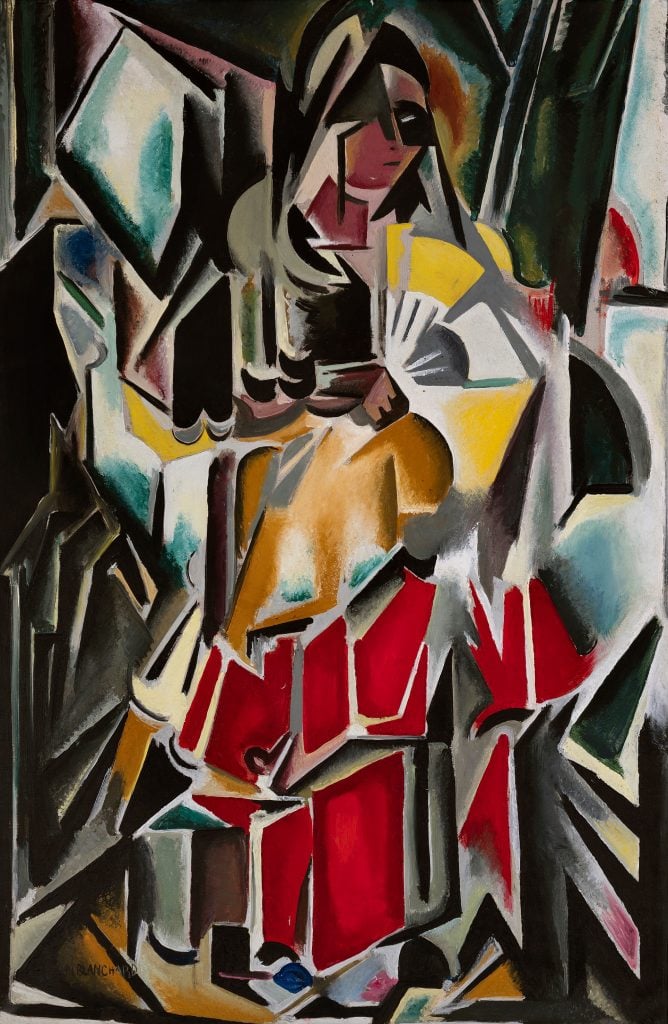
Maria Blanchard, Lady with Fan (1913-16). Photo: Belén Pereda.
At this time, Blanchard immersed herself in the city’s avant-garde artistic milieu and absorbed the latest developments in a highly experimental movement known as Cubism. At one time, she shared a studio with Diego Rivera and she also befriended Juan Gris. Upon joining the Section d’Or group, Blanchard began making colorful, collage-style Cubist works, choosing to depict predominantly female subjects or humble still lifes. A particularly fun example on show is the sensually anthropomorphized Green Still Life with Lamp (ca. 1916–17).
Blanchard’s ability to produce exploratory works on the same radical terms as her male peers helped earn the respect of a highly patriarchal art world. Just after her death, her friend, the painter and critic André Lhote, recalled how “her unquestionable technical control, allied with her intense humanity, made her work staggering.” Picasso also praised two works Plate of Fruit and Child with Balloon that were acquired by the Musée de Grenoble in 1926.
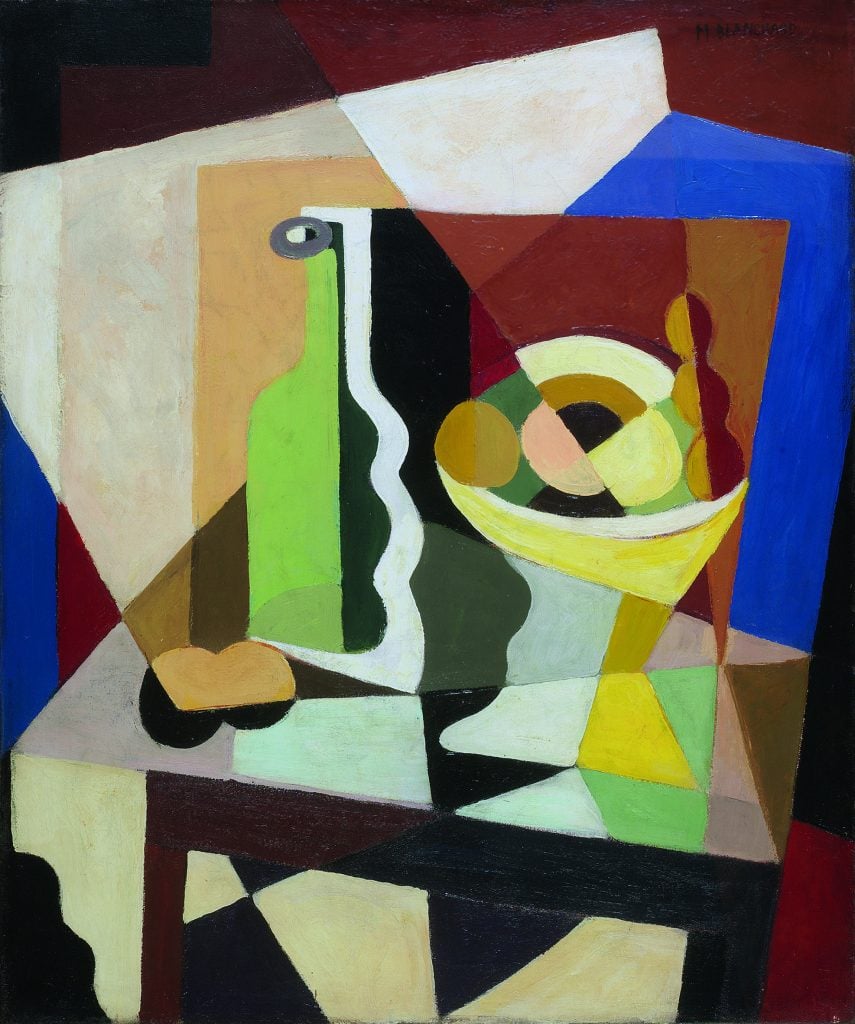
Maria Blanchard, Botella y copa de frutas sobre una tabla (c. 1917-18). Courtesy of Colección Zorrilla Lequerica.
Once she had decided to settle in Paris permanently, the artist changed her name from María Gutiérrez, taking her mother’s French surname Blanchard to make a complete break from her beginnings in comparatively conservative Spain.
Partly informed by the “return to order” prevalent in the 1920s after the horrors of World War I, Blanchard soon developed the lessons of Cubism in new directions, pursuing her own vision. Unlike many of her male peers, she was neither particularly interested in the dark complexities of modernity or increasingly abstract investigations of form. Rather, Blanchard was interested in capturing typically marginalized experiences, often focusing on subjects who were working-class or people of color.
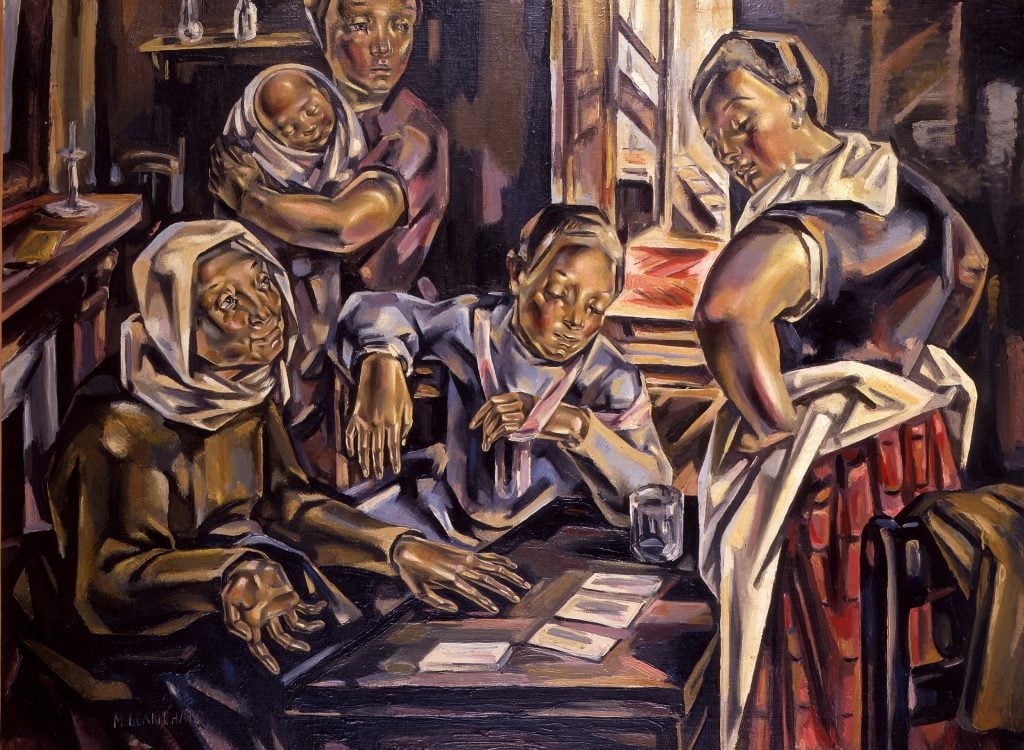
Maria Blanchard, The Fortune-Teller (1924-25). Photo: © Studio Monique Bernaz, Geneva.
She began painting everyday domestic scenes of people—mostly women—cooking, embroidering, doing household chores, getting dressed up, or breastfeeding, usually surrounded by their offspring. Whereas the identities of the women in Picasso’s many wacky portraits are almost irrelevant, a real sense of characters is evident throughout the work of Blanchard.
“Her Cubist experience likely gave her the momentum needed to continue to develop the germ of the personal project she brought with her upon leaving [Spain],” suggests the Picasso Museum’s artistic director José Lebrero Stals in the show’s catalogue. Unsurprisingly, Blanchard’s chosen themes were often picked apart by critics, who believed them to be unsophisticated and evidence of a Spanish primitivism.
During the 1920s, Blanchard was an established artist that worked with a group of dealers known as Ceux de Demain, most notably Frank Flausch, who supported her until his death in 1926. After the death of Gris in 1927, Blanchard’s health deteriorated and she died from tuberculosis on April 5, 1932, at the age of just 51.
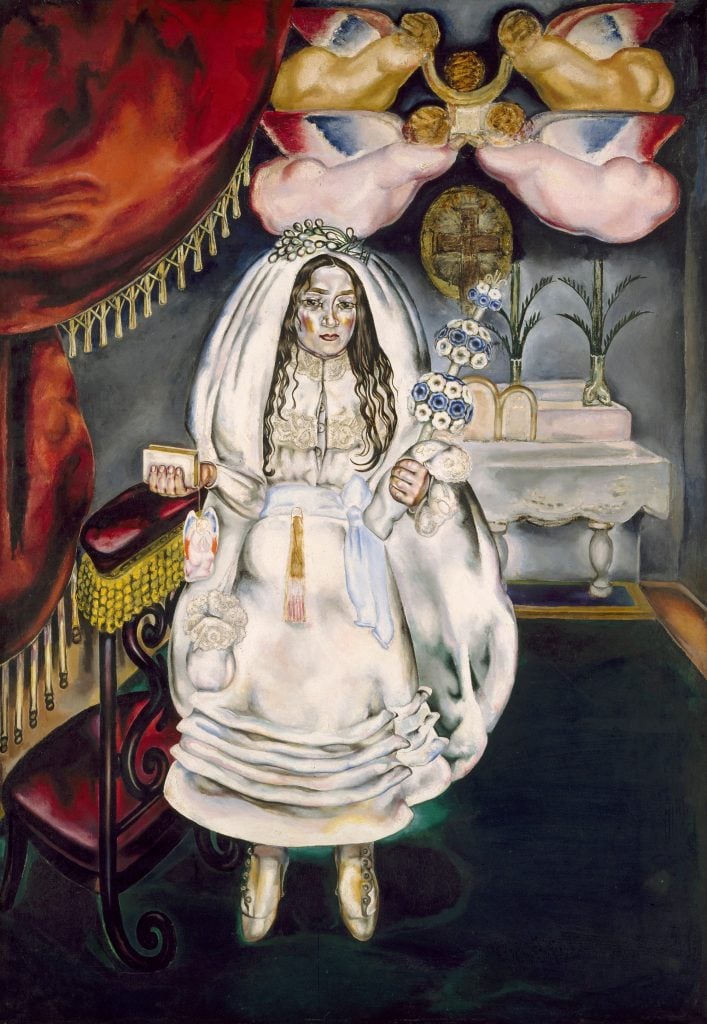
Maria Blanchard, Girl at her First Communion (1914). Photo courtesy of Photographic Archives Museo Nacional Centro de Arte Reina Sofía.
One of Blanchard’s best known works, Girl at her First Communion is an ominous interpretation of a girl’s societally-sanctioned rite of passage into womanhood. It was shown at the Salon des Indépendants in 1920 and now hangs in Spain’s pre-eminent modern art museum, the Reina Sofía in Madrid. That year, Blanchard was also included in “French Avant-Garde Art,” a landmark exhibition in Barcelona that saw her work shown alongside artists like Matisse, Miró, and Picasso.
For many decades after her death, as the continent of Europe faced the upheaval of war, only a small circle of dedicated collectors kept Blanchard’s memory alive and preserved her work. Reviewing one exhibition of her work at the Galerie Drouant-David in 1942, the critic Maximilien Gauthier described her “as a woman, a failure.” In 1950, another critic G.J. Gros claimed that she “did not sacrifice her art” to her womanhood because “she was crippled and without beauty.”
It wasn’t until 1982 that Blanchard received proper institutional recognition at the now defunct Museo Español de Arte Contemporáneo in Madrid. Another retrospective followed at the Reina Sofía in 2012, the same year her work was exhibited at Fundación Botín in Santander. So far, however, there have been no major museum show outside of Spain and much work remains to be done to bring international attention to Blanchard’s many achievements.
“Maria Blanchard: A Painter in Spite of Cubism” is on view the Picasso Museum Màlaga in Spain through September 29, 2024.